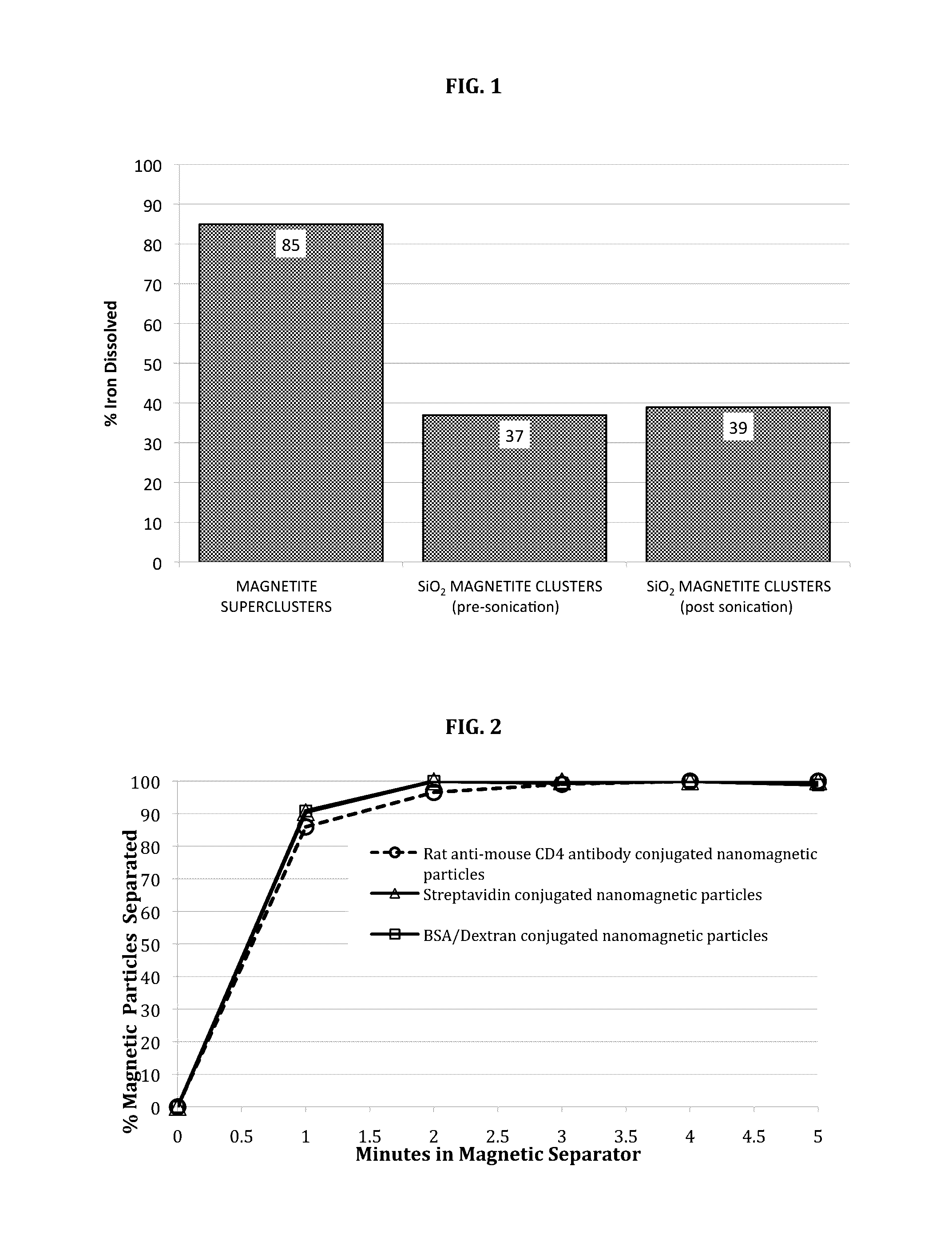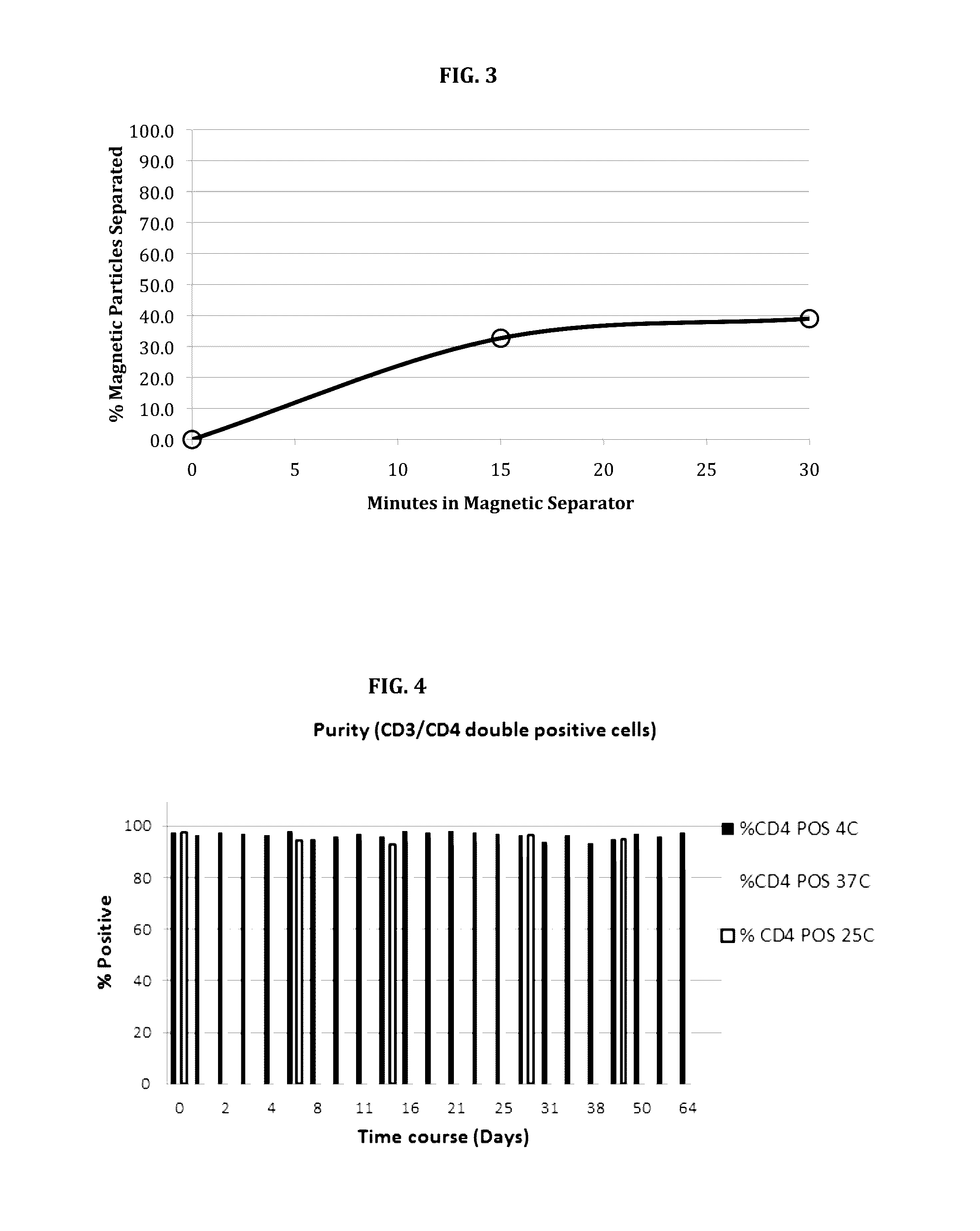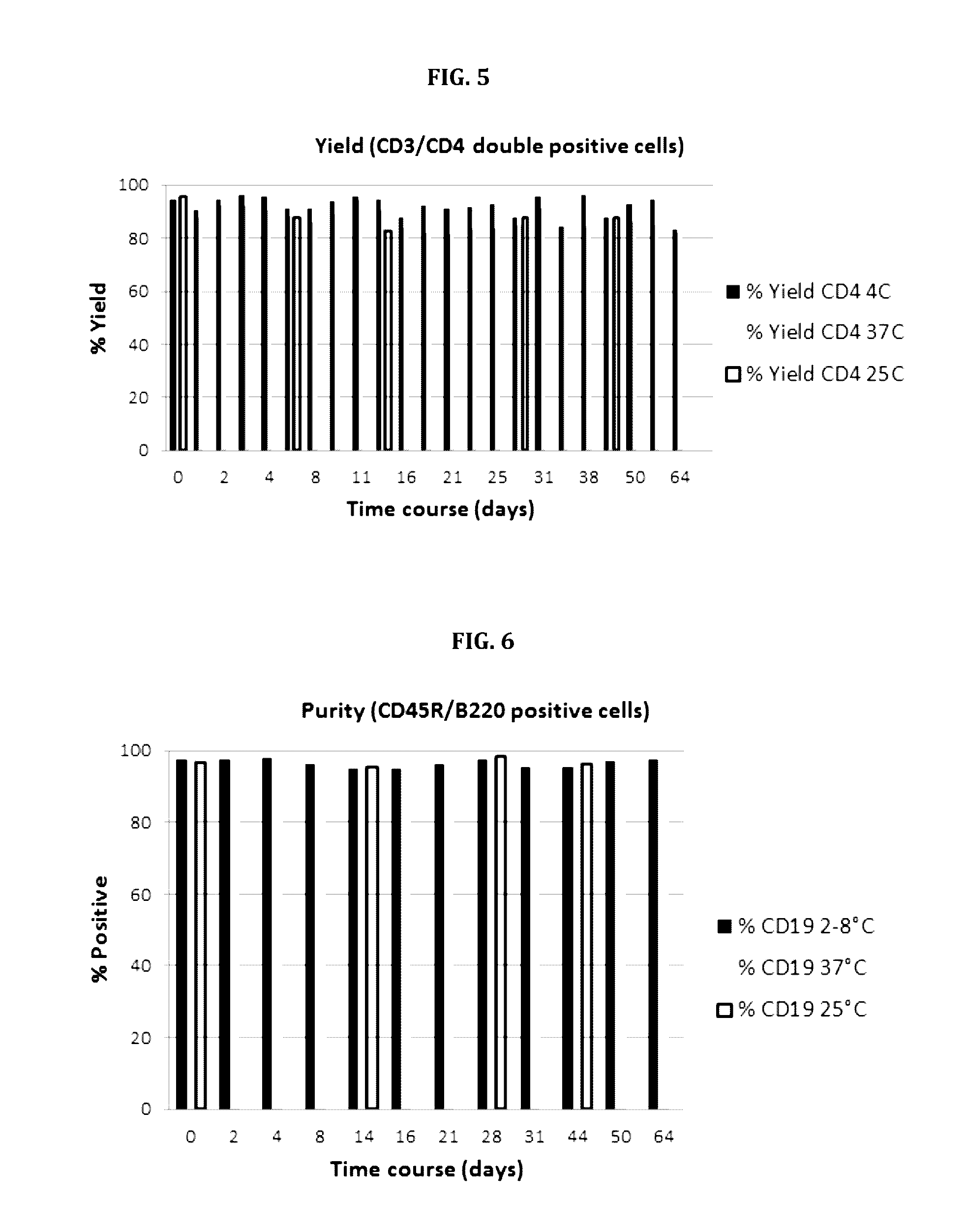Stable nanomagnetic particle dispersions
a nano-magnetic particle and dispersion technology, applied in the field of stable nano-magnetic particle dispersions, can solve the problems of difficult control of the shape and size of the resultant bioaffinity magnetic particle products, and the size of the magnetic particles of greater than 0.3 um (micrometers) in siz
- Summary
- Abstract
- Description
- Claims
- Application Information
AI Technical Summary
Benefits of technology
Problems solved by technology
Method used
Image
Examples
examples
[0055]The following Examples are provided to illustrate certain aspects of the present invention and to aid those of skill in the art in its practice. These Examples are in no way to be considered to limit the scope of the invention in any manner, and those having ordinary or greater skill in the applicable arts will readily appreciate that the specification thoroughly describes the invention and can be readily applied to carry out the objects and obtain the ends and advantages mentioned, as well as those inherent therein.
1. Synthesis of Silanized BSA / Dextran-Coated Nanomagnetic Particles
[0056]This example describes a preferred method for synthesizing silanized BSA / Dextran coated nanomagnetic particles for use in the invention. This synthesis is carried out in three stages and involves first, the synthesis of the bare (uncoated) magnetite superclusters followed by the silanization of these superclusters, and, finally, a protein / polymer coating step using a mixture of BSA / Dextran.
[00...
example i
Magnetibuoyant Methods for Rare Cell Isolation
[0101]Commercially available methods for isolating rare cells (i.e., cells such as stem cells, circulating tumor cells, fetal cells, endothelial cells, etc.) are magnetic particle-based, two-step protocols where a negative depletion step is carried out first to remove unwanted cells followed by washing steps and a positive selection step to capture rare cells. The direct positive selection of rare cells has only limited success due to non-specific binding of the solid-phase materials (i.e., magnetic and non-magnetic beads) and the immense difficulty in targeting and binding to these rare cells, which are present only at very low frequencies, typically at 1 target cell per 1 million (or more) total cells. Furthermore, the starting cell suspensions often used for direct positive selection of rare cells are very challenging cell preparations such as whole blood, buffy coats, and / or lysed whole blood. Any significant manipulation of the star...
example ii
Magnetibuoyant Method for Isolating Human CD4+ Cells at Very High Purities
[0104]The rationale depicted in FIG. 13 above can also be applied to the isolation of human CD4+ lymphocytes since the antibody targeting the CD4 antigen receptor is also co-expressed on monocytes. Current methods for isolating human CD4+ cells from peripheral blood mononuclear cells in high purity requires a pre-enrichment step to remove contaminating monocytes either with magnetic particles or by adherence to plastic plates. Thereafter, the CD4+ lymphocytes are isolated using anti-CD4 coated magnetic particles.
[0105]As shown in FIG. 14, a monocyte-specific antibody recognizing the monocyte marker CD14, such as clone #63D3 (catalogue #367102; BioLegend Inc., San Diego, Calif.), is conjugated to microbubbles and an anti-CD4-specific antibody, such as clone #5K3 (catalogue #344602; BioLegend Inc., San Diego, Calif.), is conjugated to nanomagnetic particles. With magnetibuoyant cell isolation the buoyant CD14 / CD...
PUM
| Property | Measurement | Unit |
|---|---|---|
| diameter | aaaaa | aaaaa |
| diameter | aaaaa | aaaaa |
| diameter | aaaaa | aaaaa |
Abstract
Description
Claims
Application Information
 Login to View More
Login to View More - R&D
- Intellectual Property
- Life Sciences
- Materials
- Tech Scout
- Unparalleled Data Quality
- Higher Quality Content
- 60% Fewer Hallucinations
Browse by: Latest US Patents, China's latest patents, Technical Efficacy Thesaurus, Application Domain, Technology Topic, Popular Technical Reports.
© 2025 PatSnap. All rights reserved.Legal|Privacy policy|Modern Slavery Act Transparency Statement|Sitemap|About US| Contact US: help@patsnap.com



